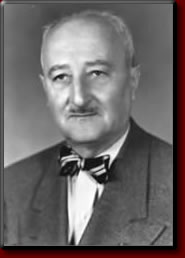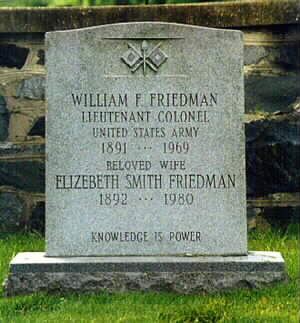He was the chief cryptanalyst of the War Department in Washington, D.C. from 1941 to 1947. He led the U.S. Army team (Special Intelligence Service) which broke the major Japanese diplomatic code in 1940 (Purple Code) and subsequently remained a key member of the Operation Magic teams which decoded Japanese ciphers and enabled U.S. military commanders to read Japanese intercepts on Japanese military movements.
Magic was the code name for the joint Army and Navy operation, first set up in 1939, to break Japanese diplomatic and military codes, Magic provided the U.S. military and political chiefs with much important intelligence throughout the war and its contribution to maior Allied operational successes has until recently been largely underestimated. The Navy Special Intelligence Unit, Communications Security Unit, with a staff by 1942 of about 300, worked with Army Signals Intelligence Section (SIS), deciphering and relaying enormous amounts of traffic in coded messages sent by the Japanese government to their agencies worldwide and by Imperial Headquarters to their commanders at sea and in the field.
Probably the most important contribution made by Magic was to the U.S. victory in the Pacific was the decoding of ciphers that revealed the Japanese attack plan for the Battle of Midway in mid-1942. Informed in advance of the Japanese objectives, Admiral Nimitz was able to preempt Japanese strategy and fight off a superior Japanese force, decisively halting the thrust of the Japanese offensive in the Pacific.
He was born in Kishinez, Russia, on September 14, 1891, he came to the United States in 1893. He died at Washington, D.C. on November 12, 1969 and was buried in Arlington National Cemetery.
Courtesy of the National Security Agency
Wolfe Frederick Friedman was born on 24 September 1891 in Kishinev, then part of imperial Russia, now Chisinau, capital of Moldova. His father, an interpreter for the Czar’s postal service, emigrated to the United States the following year to escape increasing anti-Semitic regulations; the family joined him in Pittsburgh in 1893. Three years after that, when the elder Friedman became a U.S. citizen, Wolfe’s name was changed to William.
After receiving a B.S. and doing some graduate work in genetics at Cornell University, William Friedman was hired by Riverbank Laboratories, what would today be termed a “think tank,” outside Chicago. There he became interested in the study of codes and ciphers, thanks to his concurrent interest in Elizebeth (sic) Smith, who was doing cryptanalytic research at Riverbank. Friedman left Riverbank to become a cryptologic officer during World War I, the beginning of a distinguished career in government service.
Friedman’s contributions thereafter are well known– prolific author, teacher, and practitioner of cryptology. Perhaps his greatest achievements were introducing mathematical and scientific methods into cryptology and producing training materials used by several generations of pupils. His work affected for the better both signals intelligence and information systems security, and much of what is done today at NSA may be traced to William Friedman’s pioneering efforts.
NOTE: His wife, Elizebeth Smith Friedman, who was a gifted codebreaker in her own right, is buried with him.
Michael Robert Patterson was born in Arlington and is the son of a former officer of the US Army. So it was no wonder that sooner or later his interests drew him to American history and especially to American military history. Many of his articles can be found on renowned portals like the New York Times, Washingtonpost or Wikipedia.
Reviewed by: Michael Howard


